Ovidemade by the médialab
a scholarly writing and publishing software in web and desktop versions
Tools – Software
Robin de Mourat
Ovide is an experimental single-user writing and publishing software. It has been built in the context of a design research about publication formats in the Humanities and Social Sciences, and is therefore particularly adapted to this particular field, although it could probably be useful to others.
It allows to build high quality static websites and printed documents, and work files aimed at being edited in other environments (markdown, HTML, XML-TEI).
The project
Writing as close as possible to research materials
Ovide is built according to the Peritext data model, which authorizes diverse writing strategies which are grounded in a close relationship with the materials gathered during a research process. The tool allows to document very precisely the images, videos, data files, places, dates, persons ... encountered in the frame of an enquiry.
Besides, it allows authors to interweave closely their "text" and "figures" by allowing them to specify numerous parameters for the embedding of research materials in their contents (e.g. a start and end timecode for a video, visualization parameters for a table, etc.).
(1)_d6c15225-233f-4e5a-ba09-e194fcd8ef06.png)
Therefore it allows researchers to do things such as comparing data files through their visualization, mobilizing interview excerpts, or staging the analysis of videos and images, etc.
_e7b6ebee-3265-4c4b-b8c3-56830e3e7ab4.png)
Publishing for the multitude
Ovide allows to structure content writing according to traditional methods (chapters and other parts) but also to use any research's "resources" as a starting point for writing. One can write from a bibliographic reference to produce reading notes, start from an image to develop an analysis of it, produce a detailed exploration of a data file in a notebook style, etc.
On this decentralized basis, Ovide allows to produce several "editions" from the same set of contents, depending on goals, audiences and advancement of research.
(2)_4b10b47c-569b-428e-a228-d75c1864ce39.png)
The software
Ovide is freely available online and as a desktop application.
Productions
Ovid is organized through a series of "productions". Each of them corresponds to a set of materials and texts dealing with a common subject. The productions can be duplicated, imported and exported for use by other users or other tools.
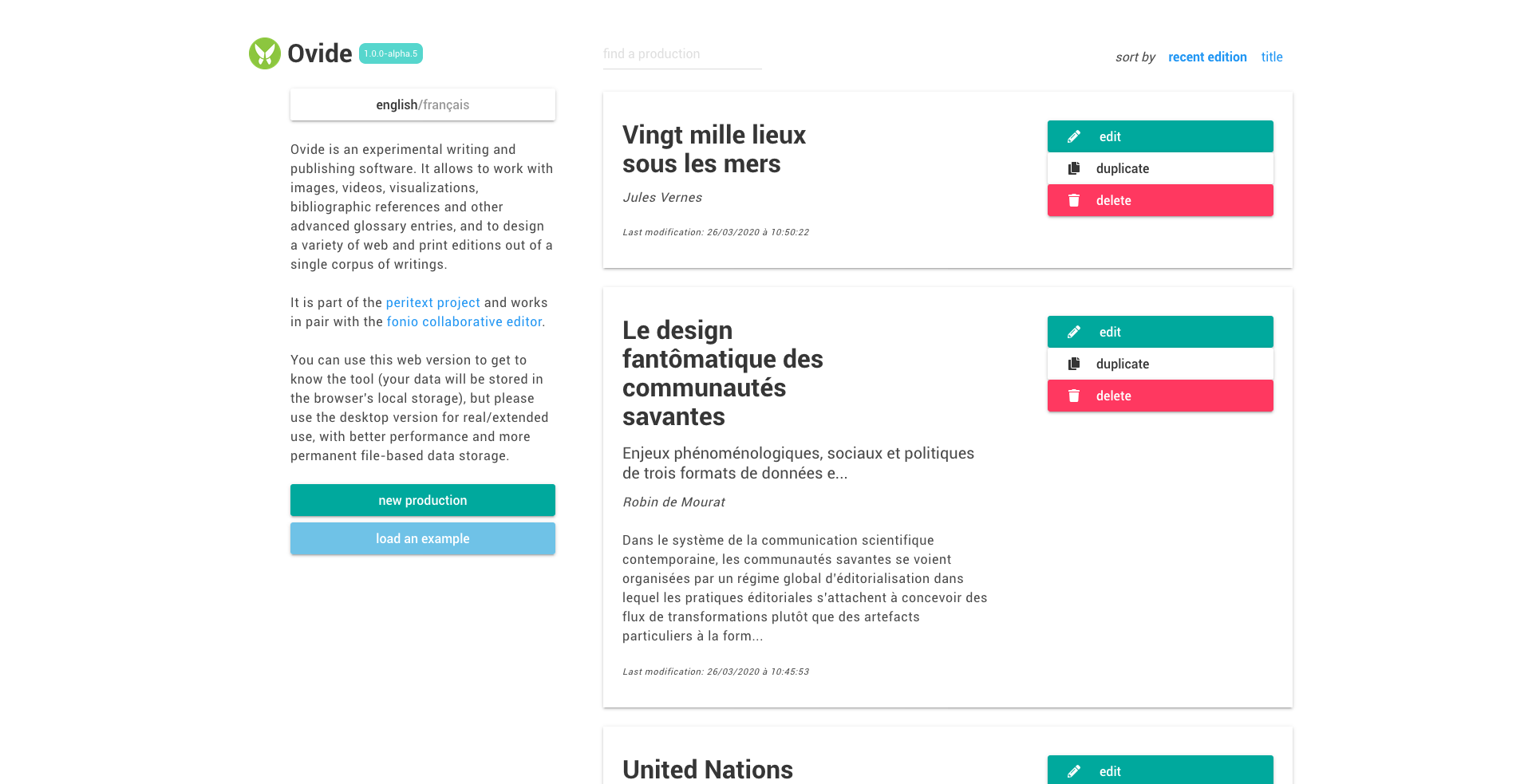
Materials
Ovide offers to manipulate and edit "materials" which can be of several types: notes, glossary entries, images, videos and other audiovisual media, bibliographic references, code excerpts, hyperlinks to web pages, tabular data. Each of the materials can be the subject of writing and annotation.
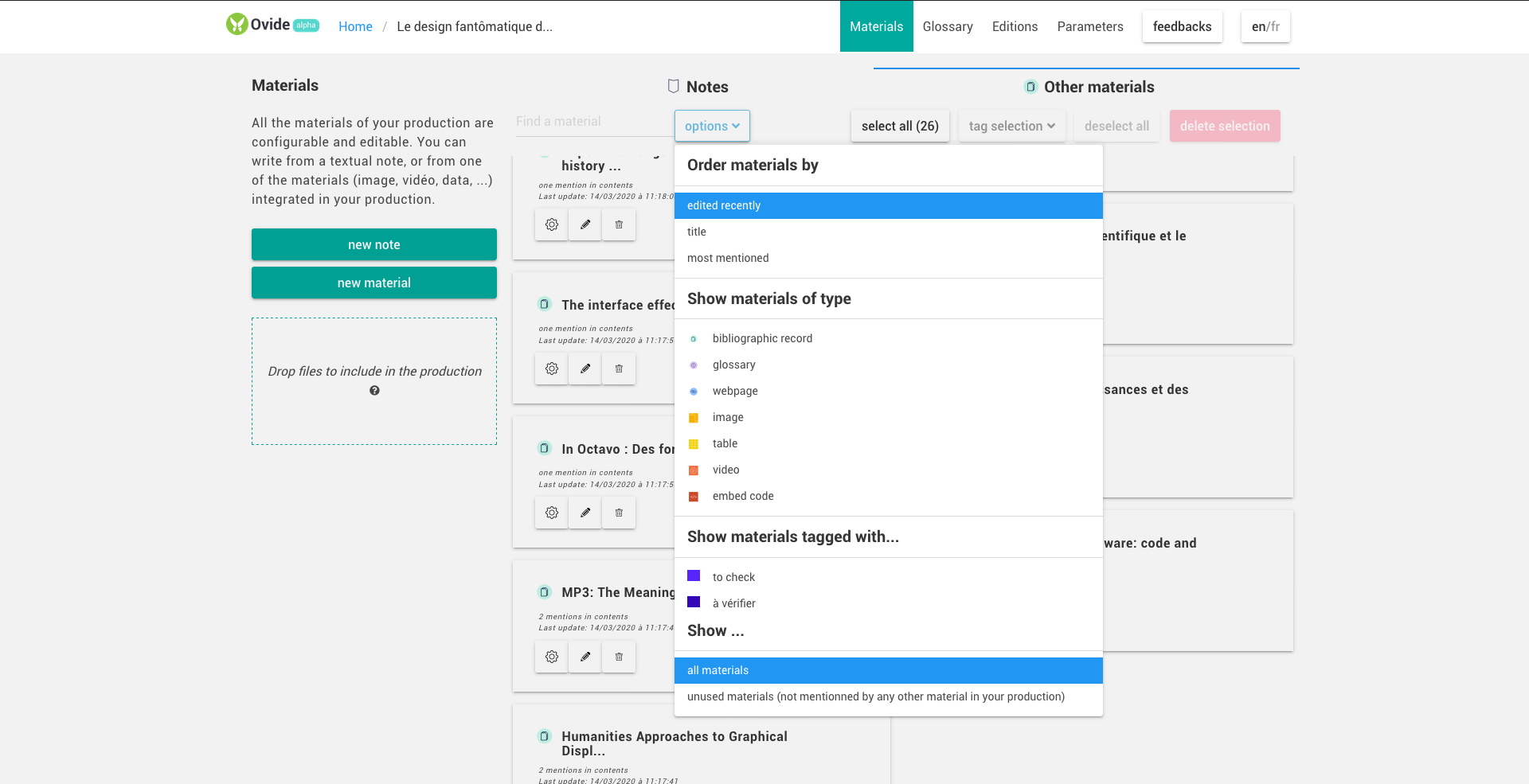
Each of the materials can be tagged in order to facilitate work organization and to produce editions displaying the contents associated with certain tags.
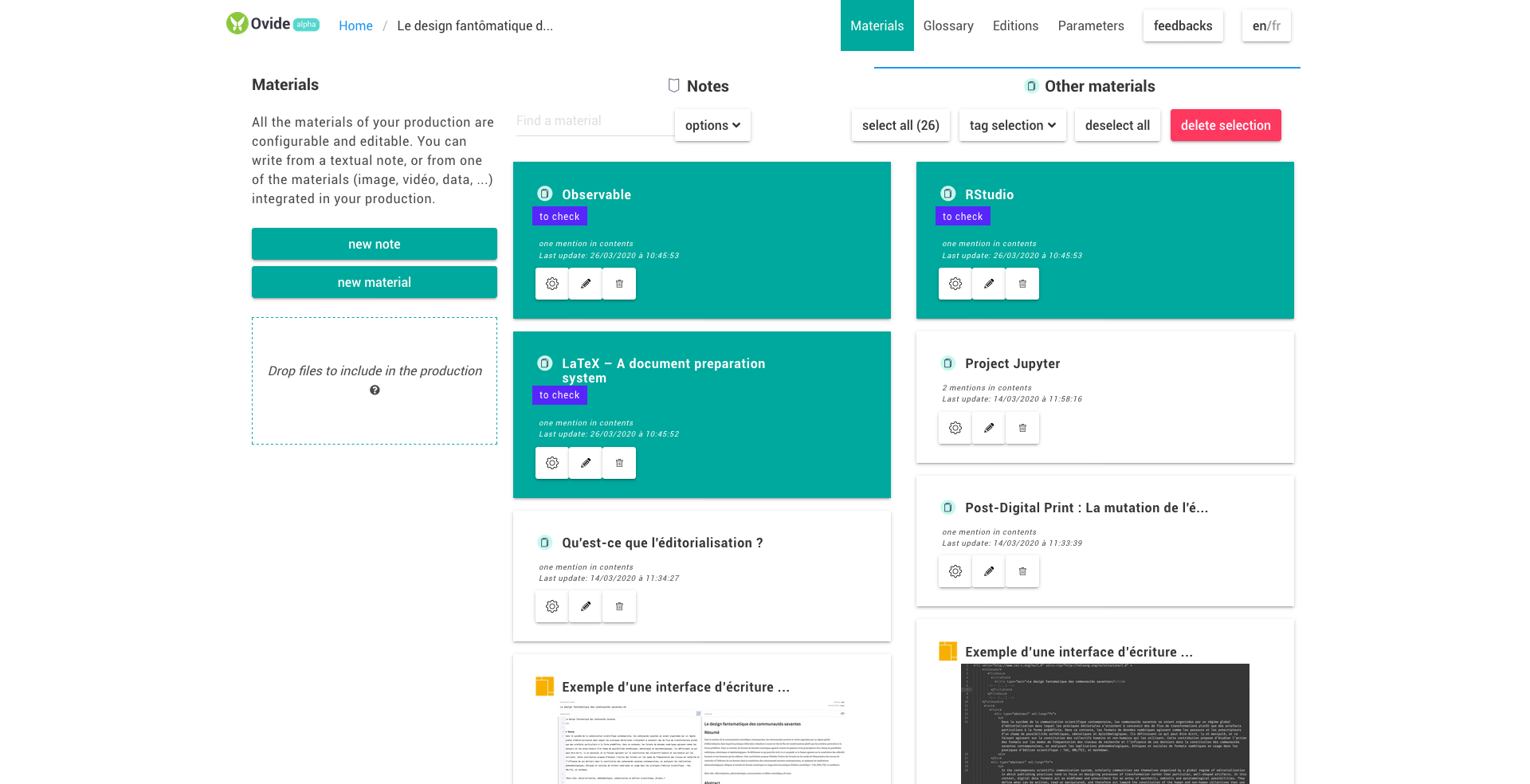
Contents editor
Ovide offers a visual text edition interface 1 which is specifically designed for scholarly writing, and allows notably to write footnotes and to manage bibliographical references:
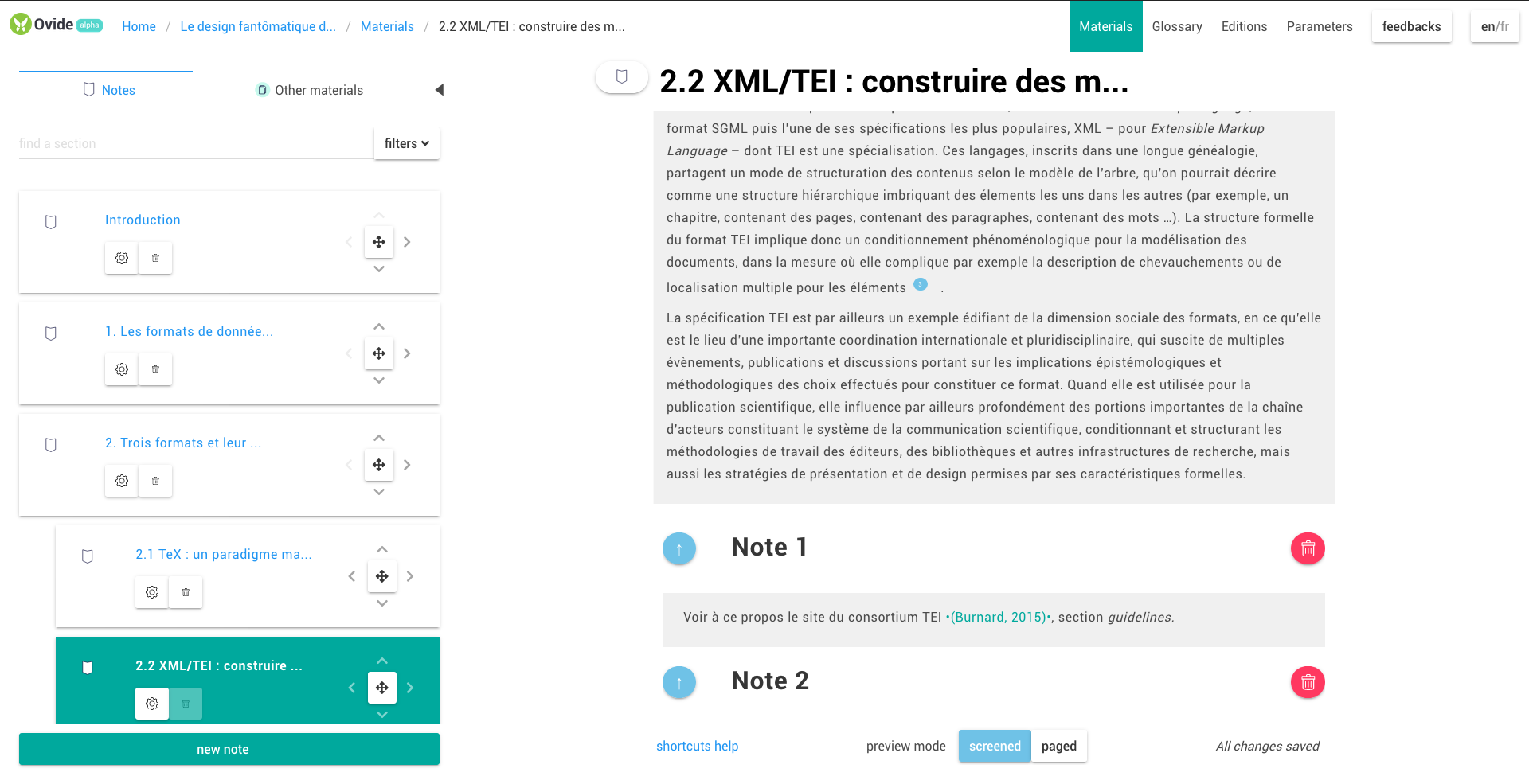
Within the contents of a material, it is possible to "mention" another material according to its type and the author's choices about to how to "stage" the material at that particular place in the contents, and according to the different available publishing formats. In this sense, Ovid allows, for example, to develop, in conjunction with the text, practices for exploring and visualizing information from "table" type materials, by means of the vega description grammar that gives access to a wide range of techniques and modes of data representation:
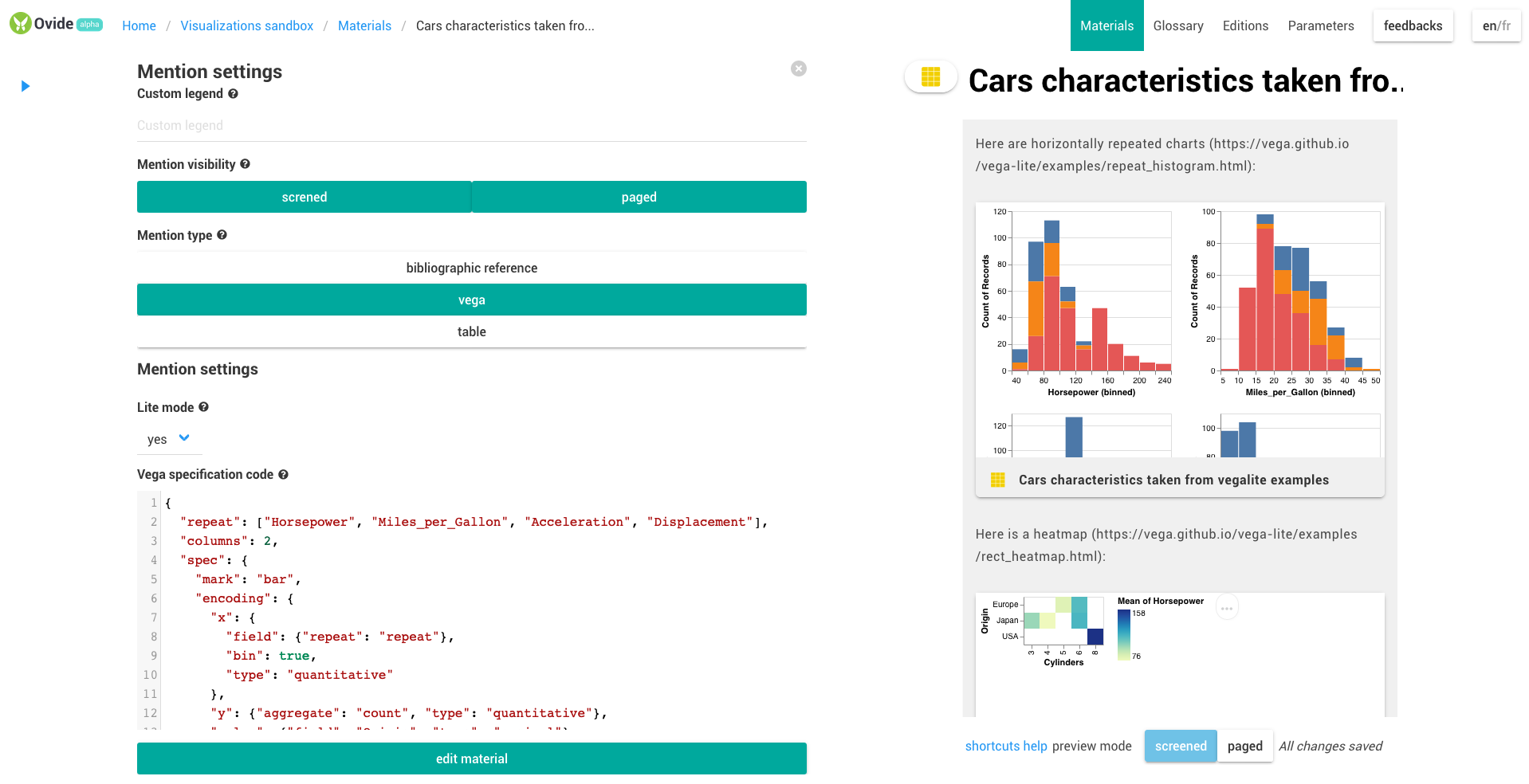
In the same way, it is possible to call up video and audio materials very finely within the contents, by punctuating the text with precisely chosen excerpts :
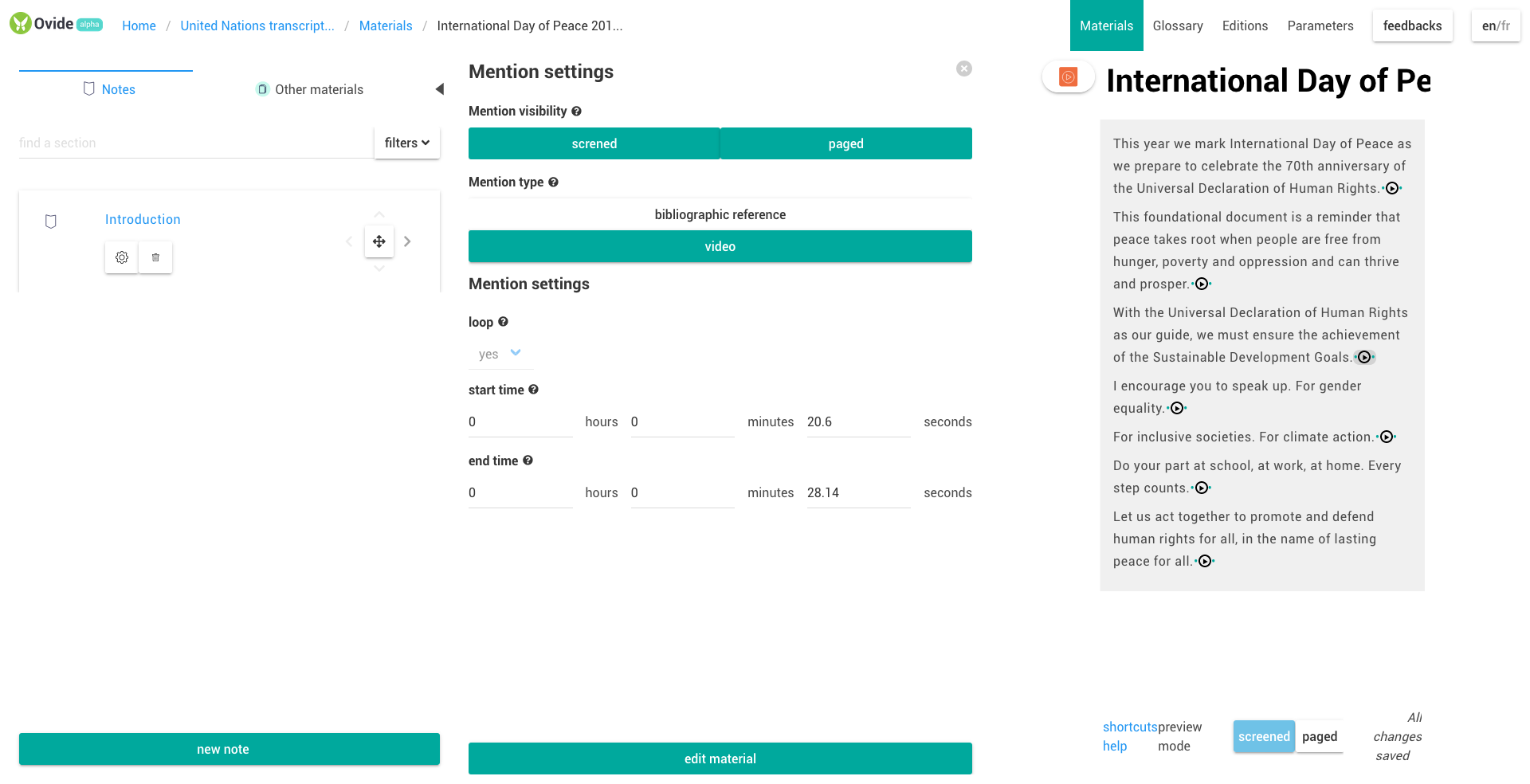
Glossary management
Ovide allows the management and enrichment of a glossary made of concepts, people, places, and dates. The "glossary" page allows to annotate the text with these elements, which will possibly be as many entry points in the text when reading it via the editions.

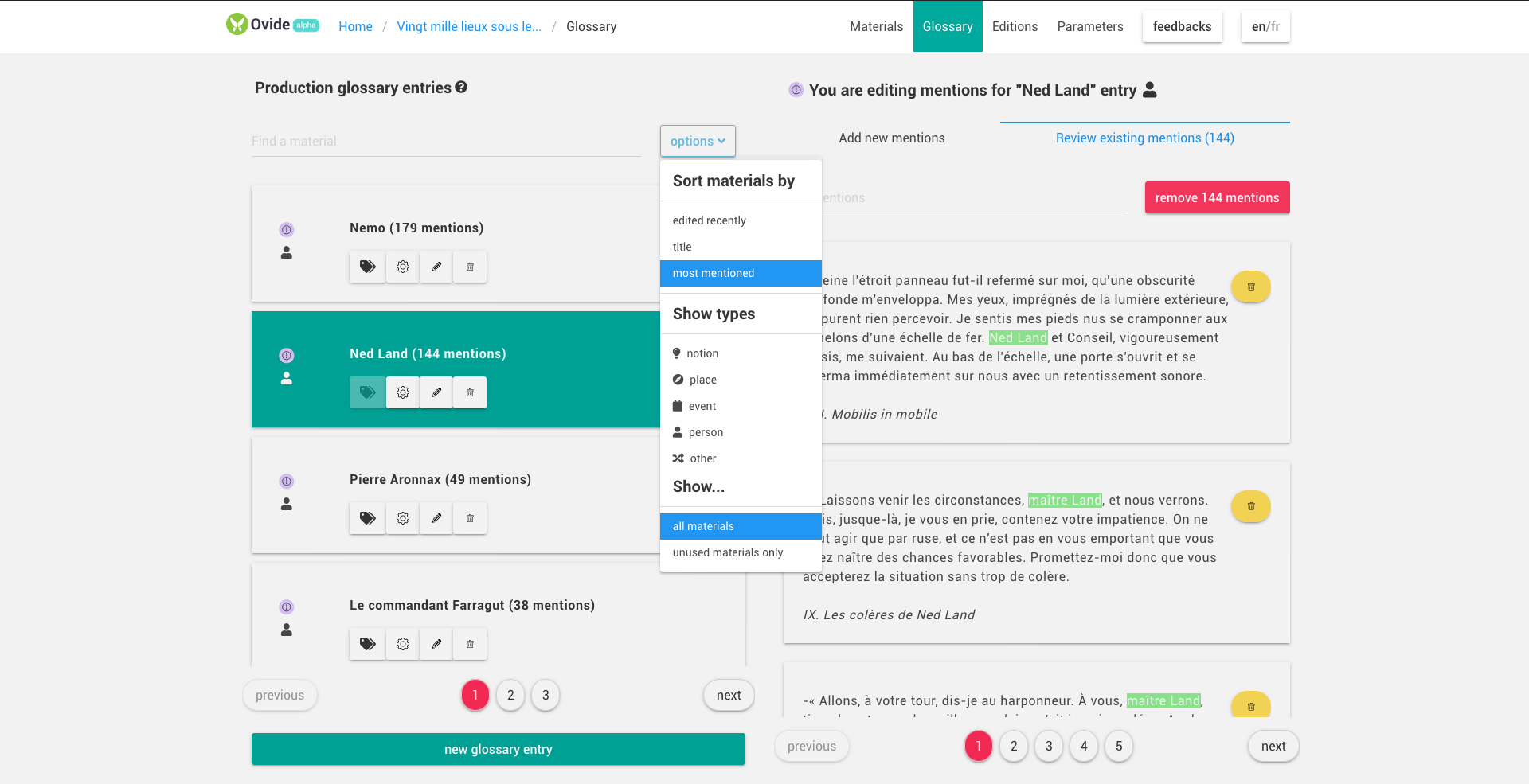
Editions
Based on the writing work done with the materials, Ovide makes it possible to create, duplicate and delete a set of editions that are composing and "staging" materials for particular editorial purposes and formats:
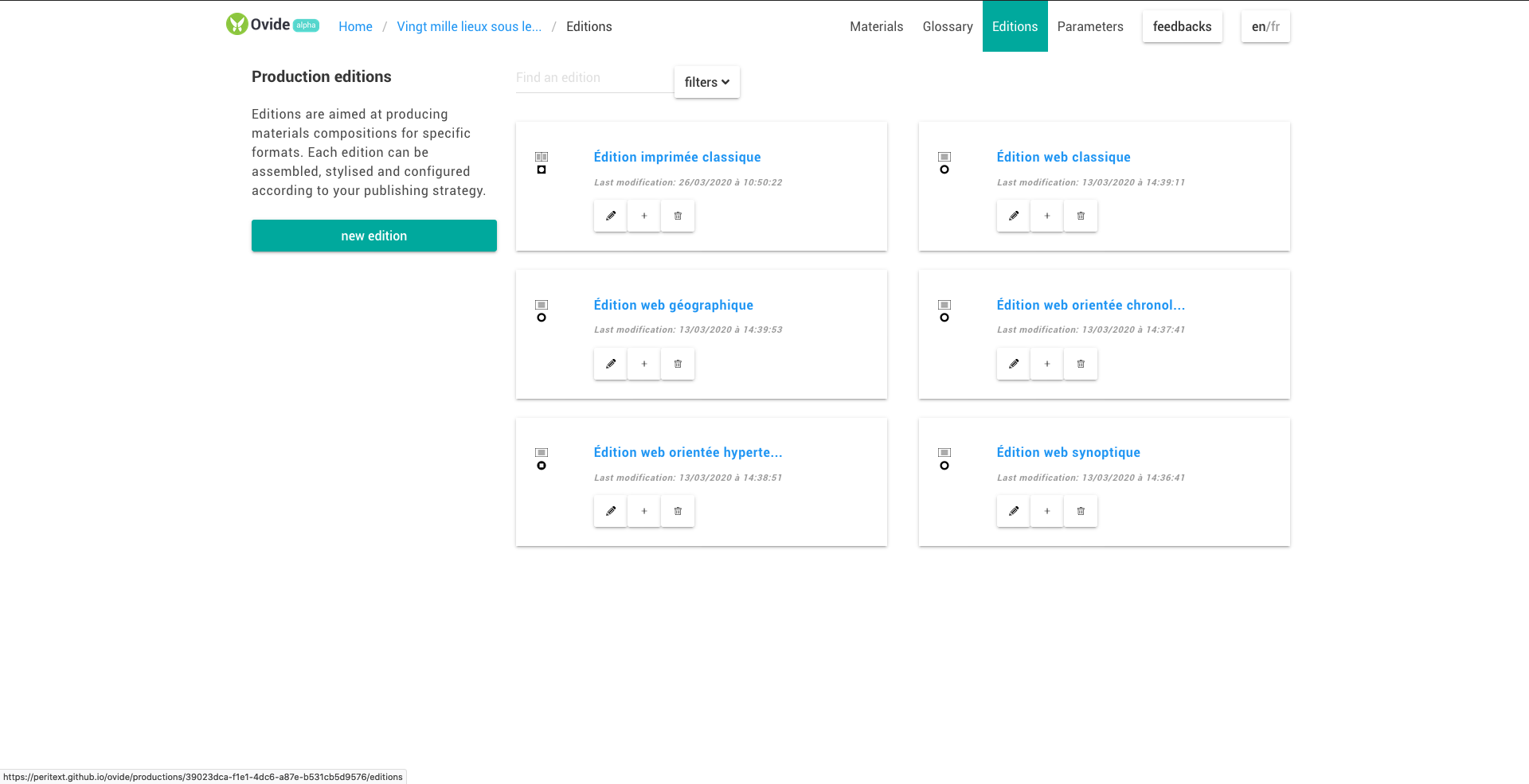
It is possible, for each edition, to specify a set of parameters and to define a particular "summary". These can be conventional components of the edition (e.g. front cover, table of contents, glossary) or more specific elements (e.g. resource selection, geographical map, network of mentions). The contents are assembled and previewed in the same interface:
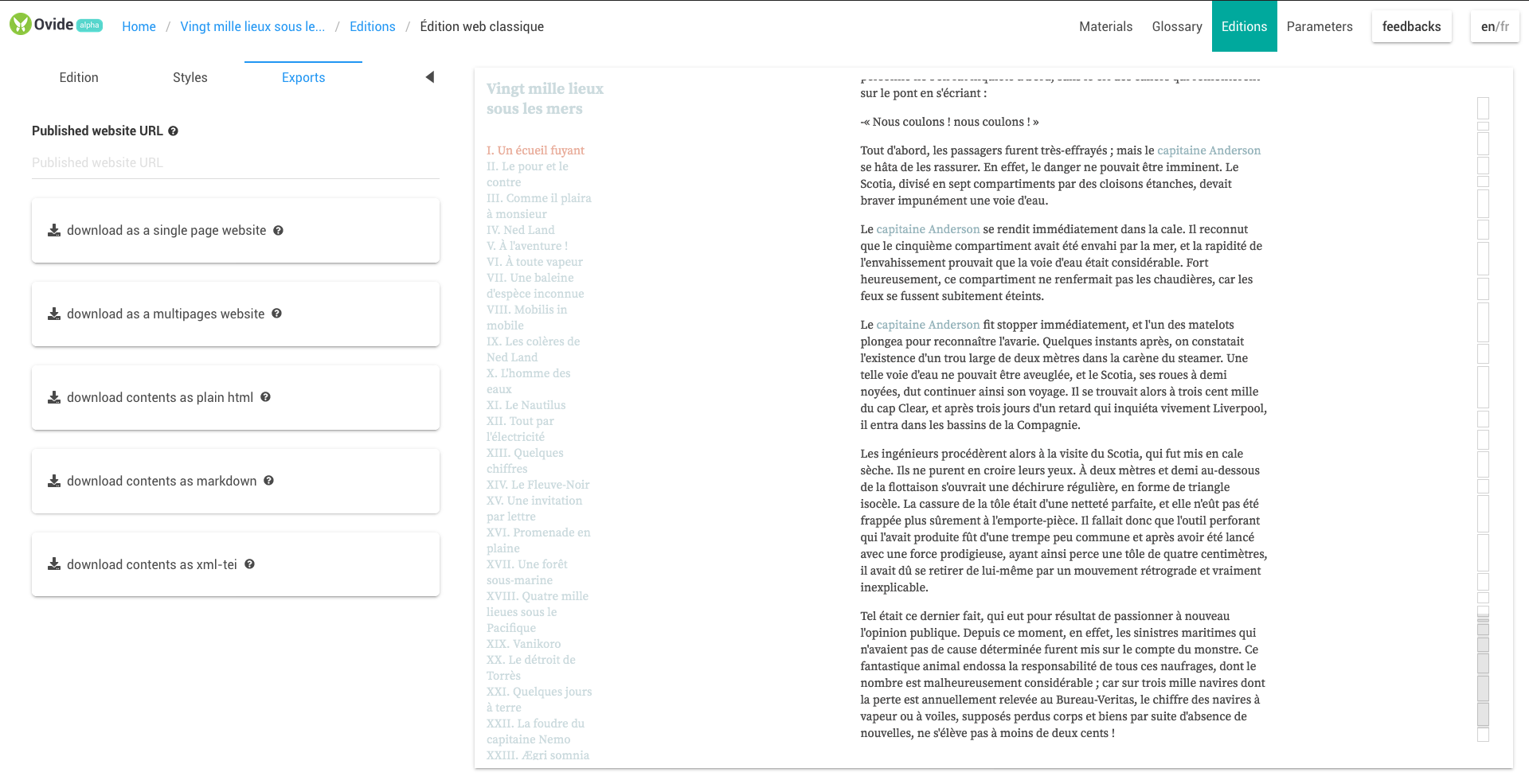
In this frame, Ovide allows building websites but also high quality print editions (thanks to the paged.js technology). The tool also offers an interface for editing CSS styles specific to each edition. It allows to modify the default styles of the edition or to start from scratch to produce a graphic design entirely specific to the edition:
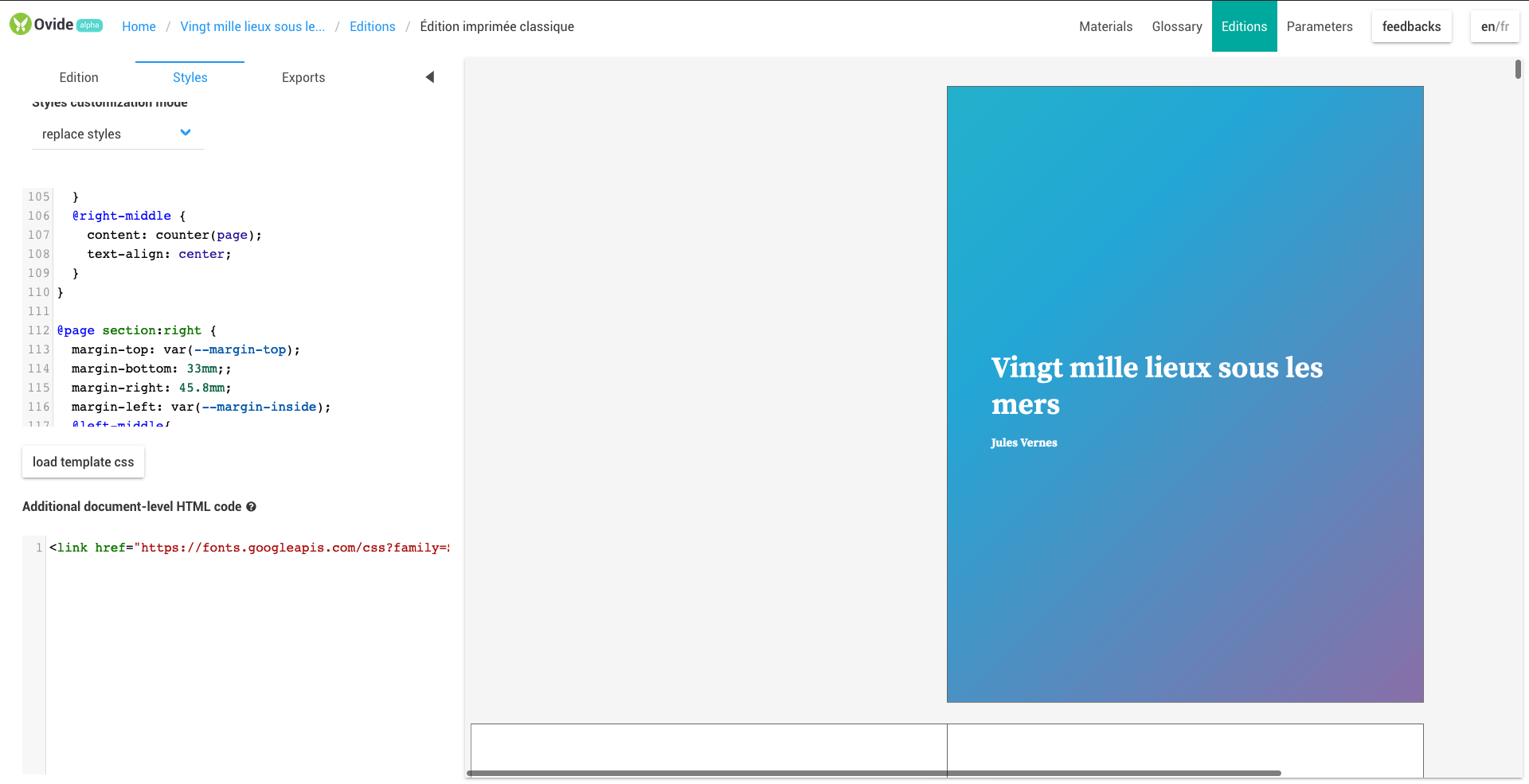
In addition, the tool offers export options directly specific to the publication (print or web) but also exports in editable file formats (HTML, markdown, XML-TEI). The publication-ready exports are intended to be "semi-finished" exports for further work with other development, design and editing tools:
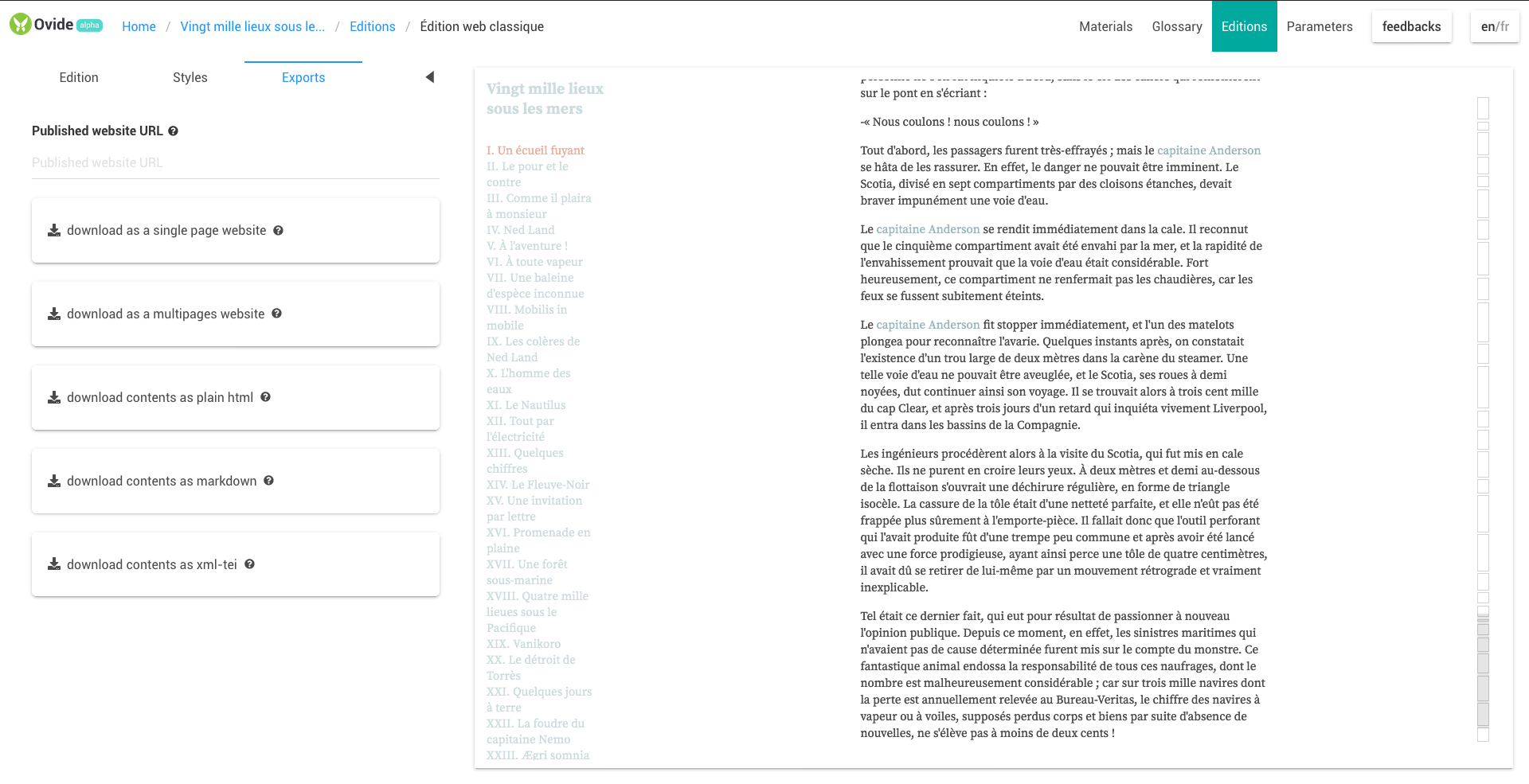
A reconfigurable tool
In addition to its appearance and functionality as such, Ovide has been designed to allow the production of more specialized editors for particular research or editorial contexts. For example, one could imagine adding a type of material related to the contents of a particular social network, use another technology for data visualization, or introduce a new or modified edition's templates, etc.
writing
all audiences
archived
2019